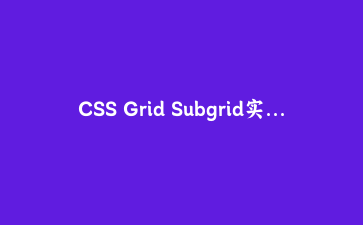引言:现代Web应用中的数据可视化挑战
在当今数据驱动的时代,实时数据可视化成为Web应用的核心需求。传统的图表库往往无法满足高性能、自定义的渲染需求。本文将深入探讨如何使用原生JavaScript和Canvas API构建一个高性能的实时数据可视化引擎,支持动态数据流和复杂的图形渲染。
一、可视化引擎架构设计
1.1 核心模块划分
我们的可视化引擎包含以下核心模块:
- 渲染引擎(Canvas Renderer)
- 数据管理器(Data Manager)
- 动画控制器(Animation Controller)
- 事件系统(Event System)
- 插件管理器(Plugin Manager)
1.2 性能优化策略
针对大数据量渲染,我们采用以下优化方案:
- 离屏Canvas缓存
- 分层渲染机制
- 增量数据更新
- Web Workers并行计算
二、核心渲染引擎实现
2.1 基础渲染器类
class VisualizationEngine {
constructor(containerId, options = {}) {
this.container = document.getElementById(containerId);
this.options = {
width: options.width || 800,
height: options.height || 600,
backgroundColor: options.backgroundColor || '#ffffff',
antialias: options.antialias !== false,
...options
};
this.layers = new Map();
this.animations = new Map();
this.dataSources = new Map();
this.isRendering = false;
this.initCanvas();
this.initEventSystem();
this.initAnimationLoop();
}
initCanvas() {
// 创建主Canvas
this.canvas = document.createElement('canvas');
this.canvas.width = this.options.width;
this.canvas.height = this.options.height;
this.canvas.style.display = 'block';
this.ctx = this.canvas.getContext('2d', {
antialias: this.options.antialias
});
this.container.appendChild(this.canvas);
// 创建离屏Canvas用于缓存
this.offscreenCanvas = document.createElement('canvas');
this.offscreenCanvas.width = this.options.width;
this.offscreenCanvas.height = this.options.height;
this.offscreenCtx = this.offscreenCanvas.getContext('2d');
// 设置渲染质量
this.ctx.imageSmoothingEnabled = true;
this.ctx.imageSmoothingQuality = 'high';
}
initEventSystem() {
this.eventHandlers = new Map();
this.setupCanvasEvents();
}
setupCanvasEvents() {
const events = ['click', 'mousemove', 'mouseenter', 'mouseleave'];
events.forEach(eventType => {
this.canvas.addEventListener(eventType, (e) => {
this.handleCanvasEvent(e);
});
});
}
handleCanvasEvent(event) {
const rect = this.canvas.getBoundingClientRect();
const x = event.clientX - rect.left;
const y = event.clientY - rect.top;
// 检测点击的图形元素
const targetElement = this.hitTest(x, y);
if (targetElement) {
this.emit(`element:${event.type}`, {
element: targetElement,
originalEvent: event,
position: { x, y }
});
}
}
hitTest(x, y) {
// 从最上层开始检测
const layers = Array.from(this.layers.values()).reverse();
for (const layer of layers) {
if (!layer.visible) continue;
for (const element of layer.elements) {
if (this.isPointInElement(x, y, element)) {
return element;
}
}
}
return null;
}
isPointInElement(x, y, element) {
// 简化的碰撞检测,实际应用中需要根据元素类型实现
return x >= element.x && x = element.y && y handler(data));
}
}2.2 分层渲染系统
class RenderLayer {
constructor(name, zIndex = 0) {
this.name = name;
this.zIndex = zIndex;
this.elements = [];
this.visible = true;
this.dirty = true; // 标记是否需要重绘
this.cacheCanvas = document.createElement('canvas');
this.cacheCtx = this.cacheCanvas.getContext('2d');
}
addElement(element) {
this.elements.push(element);
this.markDirty();
}
removeElement(element) {
const index = this.elements.indexOf(element);
if (index > -1) {
this.elements.splice(index, 1);
this.markDirty();
}
}
markDirty() {
this.dirty = true;
}
render(ctx, width, height) {
if (this.dirty) {
this.renderToCache(width, height);
this.dirty = false;
}
// 从缓存绘制
ctx.drawImage(this.cacheCanvas, 0, 0);
}
renderToCache(width, height) {
this.cacheCanvas.width = width;
this.cacheCanvas.height = height;
this.cacheCtx.clearRect(0, 0, width, height);
this.elements.forEach(element => {
if (element.visible) {
element.render(this.cacheCtx);
}
});
}
}
// 在引擎中添加图层管理方法
VisualizationEngine.prototype.addLayer = function(name, zIndex = 0) {
const layer = new RenderLayer(name, zIndex);
this.layers.set(name, layer);
return layer;
};
VisualizationEngine.prototype.getLayer = function(name) {
return this.layers.get(name);
};三、数据流管理与实时更新
3.1 数据管理器实现
class DataManager {
constructor(engine) {
this.engine = engine;
this.datasets = new Map();
this.realtimeSources = new Map();
this.dataProcessors = [];
}
addDataset(name, data, options = {}) {
const dataset = {
name,
rawData: data,
processedData: null,
options: {
maxPoints: options.maxPoints || 1000,
sampling: options.sampling || false,
...options
},
listeners: new Set()
};
this.processData(dataset);
this.datasets.set(name, dataset);
return dataset;
}
processData(dataset) {
let processedData = dataset.rawData;
// 应用数据处理器
this.dataProcessors.forEach(processor => {
processedData = processor(processedData, dataset.options);
});
// 数据采样(大数据量时)
if (dataset.options.sampling && processedData.length > dataset.options.maxPoints) {
processedData = this.sampleData(processedData, dataset.options.maxPoints);
}
dataset.processedData = processedData;
this.notifyDatasetUpdate(dataset.name);
}
sampleData(data, maxPoints) {
if (data.length <= maxPoints) return data;
const sampled = [];
const step = Math.ceil(data.length / maxPoints);
for (let i = 0; i {
source.isConnected = true;
console.log(`WebSocket ${source.name} connected`);
};
source.ws.onmessage = (event) => {
const data = JSON.parse(event.data);
this.handleRealtimeData(source.name, data);
};
source.ws.onclose = () => {
source.isConnected = false;
console.log(`WebSocket ${source.name} disconnected`);
// 自动重连
setTimeout(() => this.setupWebSocketSource(source), 5000);
};
} catch (error) {
console.error(`WebSocket connection failed: ${error}`);
}
}
handleRealtimeData(sourceName, data) {
const source = this.realtimeSources.get(sourceName);
if (!source) return;
source.dataBuffer.push({
timestamp: Date.now(),
data: data
});
// 限制缓冲区大小
if (source.dataBuffer.length > source.config.bufferSize) {
source.dataBuffer.shift();
}
// 通知数据更新
this.engine.emit('realtimeData', {
source: sourceName,
data: data,
buffer: source.dataBuffer
});
}
onDatasetUpdate(name, callback) {
const dataset = this.datasets.get(name);
if (dataset) {
dataset.listeners.add(callback);
}
}
notifyDatasetUpdate(name) {
const dataset = this.datasets.get(name);
if (dataset) {
dataset.listeners.forEach(callback => {
callback(dataset.processedData);
});
}
}
}四、高级图形元素与动画系统
4.1 基础图形元素类
class VisualElement {
constructor(options = {}) {
this.x = options.x || 0;
this.y = options.y || 0;
this.width = options.width || 100;
this.height = options.height || 100;
this.visible = options.visible !== false;
this.interactive = options.interactive !== false;
this.style = {
fill: options.fill || '#3498db',
stroke: options.stroke || '#2980b9',
strokeWidth: options.strokeWidth || 2,
opacity: options.opacity || 1,
...options.style
};
this.animations = new Map();
}
render(ctx) {
if (!this.visible) return;
ctx.save();
this.applyStyles(ctx);
this.draw(ctx);
ctx.restore();
}
applyStyles(ctx) {
ctx.globalAlpha = this.style.opacity;
if (this.style.fill) {
ctx.fillStyle = this.style.fill;
}
if (this.style.stroke) {
ctx.strokeStyle = this.style.stroke;
}
if (this.style.strokeWidth) {
ctx.lineWidth = this.style.strokeWidth;
}
}
draw(ctx) {
// 子类重写此方法实现具体绘制逻辑
}
addAnimation(name, animation) {
this.animations.set(name, animation);
}
update(deltaTime) {
this.animations.forEach(animation => {
animation.update(this, deltaTime);
});
}
}
class DataPoint extends VisualElement {
constructor(options) {
super(options);
this.value = options.value || 0;
this.radius = options.radius || 4;
this.highlighted = false;
}
draw(ctx) {
ctx.beginPath();
ctx.arc(this.x, this.y, this.radius, 0, Math.PI * 2);
if (this.highlighted) {
ctx.fillStyle = '#e74c3c';
ctx.fill();
} else {
ctx.fillStyle = this.style.fill;
ctx.fill();
}
if (this.style.stroke) {
ctx.stroke();
}
}
}
class LineChart extends VisualElement {
constructor(options) {
super(options);
this.data = options.data || [];
this.smooth = options.smooth !== false;
this.showPoints = options.showPoints !== false;
this.points = [];
}
setData(data) {
this.data = data;
this.updatePoints();
}
updatePoints() {
if (!this.data.length) return;
const xStep = this.width / (this.data.length - 1);
const minValue = Math.min(...this.data);
const maxValue = Math.max(...this.data);
const valueRange = maxValue - minValue || 1;
this.points = this.data.map((value, index) => {
const x = this.x + index * xStep;
const normalizedValue = (value - minValue) / valueRange;
const y = this.y + this.height - (normalizedValue * this.height);
return new DataPoint({
x: x,
y: y,
value: value,
radius: 3,
style: {
fill: this.style.pointColor || '#e74c3c',
stroke: this.style.pointStroke || '#c0392b'
}
});
});
}
draw(ctx) {
if (this.points.length point.render(ctx));
}
}
drawStraightLine(ctx) {
for (let i = 1; i < this.points.length; i++) {
ctx.lineTo(this.points[i].x, this.points[i].y);
}
}
drawSmoothLine(ctx) {
for (let i = 1; i < this.points.length - 1; i++) {
const xc = (this.points[i].x + this.points[i + 1].x) / 2;
const yc = (this.points[i].y + this.points[i + 1].y) / 2;
ctx.quadraticCurveTo(this.points[i].x, this.points[i].y, xc, yc);
}
}
}4.2 动画系统实现
class Animation {
constructor(target, duration, easing = 'easeInOut') {
this.target = target;
this.duration = duration;
this.easing = easing;
this.startTime = null;
this.isRunning = false;
this.onComplete = null;
}
start() {
this.startTime = Date.now();
this.isRunning = true;
}
update(element, deltaTime) {
if (!this.isRunning) return;
const elapsed = Date.now() - this.startTime;
const progress = Math.min(elapsed / this.duration, 1);
const easedProgress = this.ease(progress, this.easing);
this.animate(element, easedProgress);
if (progress >= 1) {
this.isRunning = false;
if (this.onComplete) {
this.onComplete();
}
}
}
ease(t, type) {
switch (type) {
case 'easeIn':
return t * t;
case 'easeOut':
return t * (2 - t);
case 'easeInOut':
return t < 0.5 ? 2 * t * t : -1 + (4 - 2 * t) * t;
default:
return t;
}
}
animate(element, progress) {
// 子类重写此方法实现具体动画
}
}
class FadeAnimation extends Animation {
constructor(target, duration, fromOpacity = 0, toOpacity = 1) {
super(target, duration);
this.fromOpacity = fromOpacity;
this.toOpacity = toOpacity;
}
animate(element, progress) {
element.style.opacity = this.fromOpacity +
(this.toOpacity - this.fromOpacity) * progress;
}
}
class MoveAnimation extends Animation {
constructor(target, duration, fromX, fromY, toX, toY) {
super(target, duration);
this.fromX = fromX;
this.fromY = fromY;
this.toX = toX;
this.toY = toY;
}
animate(element, progress) {
element.x = this.fromX + (this.toX - this.fromX) * progress;
element.y = this.fromY + (this.toY - this.fromY) * progress;
}
}五、完整应用示例
5.1 实时股票数据可视化
class StockChartApplication {
constructor() {
this.engine = new VisualizationEngine('chart-container', {
width: 1000,
height: 600,
backgroundColor: '#1e1e1e'
});
this.dataManager = new DataManager(this.engine);
this.setupChart();
this.setupRealtimeData();
}
setupChart() {
// 创建背景层
this.backgroundLayer = this.engine.addLayer('background', 0);
// 创建数据层
this.dataLayer = this.engine.addLayer('data', 1);
// 创建UI层
this.uiLayer = this.engine.addLayer('ui', 2);
// 初始化图表
this.lineChart = new LineChart({
x: 50,
y: 50,
width: 900,
height: 500,
style: {
stroke: '#27ae60',
strokeWidth: 3,
pointColor: '#2ecc71'
}
});
this.dataLayer.addElement(this.lineChart);
// 添加网格
this.addGrid();
}
addGrid() {
const grid = new VisualElement({
x: 50,
y: 50,
width: 900,
height: 500
});
grid.draw = (ctx) => {
ctx.strokeStyle = '#34495e';
ctx.lineWidth = 1;
// 水平网格线
for (let i = 0; i <= 5; i++) {
const y = 50 + i * 100;
ctx.beginPath();
ctx.moveTo(50, y);
ctx.lineTo(950, y);
ctx.stroke();
}
// 垂直网格线
for (let i = 0; i {
this.updateChart(event.data);
});
// 启动数据模拟
this.startDataSimulation();
}
startDataSimulation() {
let basePrice = 100;
const initialData = Array.from({length: 50}, (_, i) => {
basePrice += (Math.random() - 0.5) * 2;
return Math.max(basePrice, 1);
});
this.lineChart.setData(initialData);
// 模拟实时数据更新
setInterval(() => {
const lastPrice = this.lineChart.data[this.lineChart.data.length - 1];
const newPrice = lastPrice + (Math.random() - 0.5) * 2;
const newData = [...this.lineChart.data.slice(1), newPrice];
this.lineChart.setData(newData);
// 触发重绘
this.dataLayer.markDirty();
}, 1000);
}
updateChart(newData) {
// 处理新数据并更新图表
const animation = new FadeAnimation(this.lineChart, 500, 0.5, 1);
animation.start();
this.lineChart.addAnimation('update', animation);
}
}
// 初始化应用
const app = new StockChartApplication();六、性能监控与优化
6.1 渲染性能监控
class PerformanceMonitor {
constructor(engine) {
this.engine = engine;
this.fps = 0;
this.frameCount = 0;
this.lastTime = Date.now();
this.stats = {
frameTime: 0,
drawCalls: 0,
elementsRendered: 0
};
this.setupMonitoring();
}
setupMonitoring() {
this.engine.on('beforeRender', () => {
this.stats.drawCalls = 0;
this.stats.elementsRendered = 0;
});
this.engine.on('afterRender', () => {
this.updateFPS();
this.logStats();
});
}
updateFPS() {
this.frameCount++;
const currentTime = Date.now();
if (currentTime >= this.lastTime + 1000) {
this.fps = Math.round((this.frameCount * 1000) / (currentTime - this.lastTime));
this.frameCount = 0;
this.lastTime = currentTime;
}
}
logStats() {
if (this.fps < 30) {
console.warn(`低FPS警告: ${this.fps},考虑优化渲染性能`);
}
}
getPerformanceReport() {
return {
fps: this.fps,
...this.stats,
memory: performance.memory ? {
used: Math.round(performance.memory.usedJSHeapSize / 1048576),
total: Math.round(performance.memory.totalJSHeapSize / 1048576)
} : null
};
}
}七、总结与扩展
本文详细介绍了如何使用原生JavaScript和Canvas API构建高性能的实时数据可视化引擎。通过分层渲染、数据流管理、动画系统等核心模块,我们实现了一个功能完整、性能优异的可视化解决方案。
主要技术亮点:
- 模块化架构设计,易于扩展和维护
- 分层渲染系统,优化渲染性能
- 实时数据流处理,支持WebSocket和SSE
- 灵活的动画系统,支持多种缓动函数
- 完整的性能监控和优化策略
进一步扩展方向:
- 集成WebGL实现3D可视化
- 添加机器学习数据异常检测
- 实现多图表联动和钻取分析
- 开发可视化组件库和插件生态
- 支持VR/AR环境下的数据可视化
这个引擎为构建复杂的数据可视化应用提供了坚实的基础,开发者可以根据具体需求进行定制和扩展,创造出更加丰富和交互性更强的数据展示体验。













